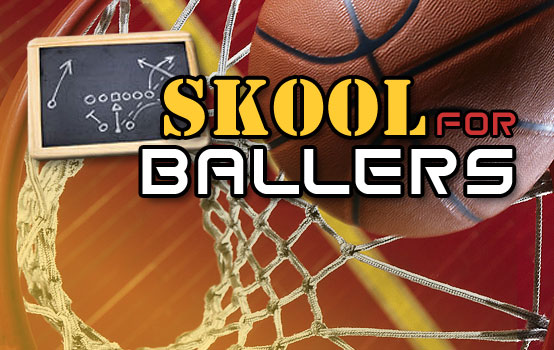
Each week in The Hoop Doctors “Skool for Ballers” we will bring you tips, analysis, or drills on various aspects of the game to help guide your training to be the best damn baller you can be! Don’t forget, being a GREAT baller takes as much work off the court as it does on!
Free Throws and Skills Development – By Brian McCormick – 180 Shooter
Many veterans believe that today’s players lack fundamentals, and free throws are deemed the ultimate fundamental skill. Every Joe watching a game on TV thinks he can make the free throw that an NBA player missed.
However, free throw percentages have remained the same for the better part of 50 years.
Since the mid-1960s, college men’s players have made about 69 percent of free throws, the unguarded 15-foot, 1-point shot awarded after a foul. In 1965, the rate was 69 percent. This season, as teams scramble for bids to the NCAA tournament, it was 68.8. It has dropped as low as 67.1 but never topped 70.
In the National Basketball Association, the average has been roughly 75 percent for more than 50 years.
Our perceptions of free throw shooting are negative because it is a shot that we expect to make. Therefore, we pay attention to the misses more than the makes because a miss does not meet our expectation. A game-winning free throw typically leads to relief, while a game-losing miss creates a very negative emotional reaction, and we remember the emotional reaction. Therefore, we over-exaggerate misses and underestimate shooting percentages.
That being said, the lack of improvement over 50 years is interesting. “It’s unbelievable,” Larry Wright, an adjunct professor of statistics at Columbia, said as he studied the year-by-year averages. “There’s almost no difference. Fifty years. This is mind-boggling.”
Ray Stefani, a professor emeritus at California State University, Long Beach, is an expert in the statistical analysis of sports. Widespread improvement over time in any sport, he said, depends on a combination of four factors: physiology (the size and fitness of athletes, perhaps aided by performance-enhancing drugs), technology or innovation (things like the advent of rowing machines to train rowers, and the Fosbury Flop in high jumping), coaching (changes in strategy) and equipment (like the clap skate in speedskating or fiberglass poles in pole vaulting).
The only one of the four that is applicable to free throw shooting is coaching.
“A lot of coaches don’t want to spend time on it in practice,” said Blake Ahearn, a former Missouri State player who is the N.C.A.A.’s leader in career free-throw percentage (94.6) and now leads the N.B.A. Development League as a guard for the Dakota Wizards. “They want to work on defenses and offenses and schemes.”
Some teams spend a lot of time on free throws and others do not. Some believe in their new free throw drill. However, as I have written several times in the Hard2Guard Player Development Newsletters recently, I believe the way we practice, poor technique and a player’s approach contribute to stagnant free throw percentages. Players and coaches do not pay attention to small details – like hand positioning at the set position – and these details impact the repeatability of the player’s shot technique.
I do not think that players suffer from a lack of practice time. I think that there is a lack of deliberate practice on the free throw line and an acceptance of average technique rather than aiming for perfect technique.
If we believe that 70% is good free throw shooting, we are going to have 70% free throw shooters. Only when we raise our expectations, which influenced our approach, technique and practice will we see free throw percentages improve.
To check out The Hoop Doctors other ‘Skool for Ballers’ posts click here.














